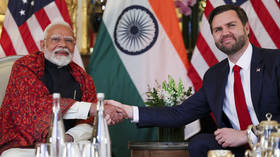Global grain producers cash in on Russia’s export exit
America's grain exporters are expected to raise their forecast for full-year exports to 36 million tons, after Russia stopped grain supplies to other countries on August 15, 2010.
The 3rd increase in 2 months suggests American grain producers are filling the vacuum left by Russia’s decision to end exports in the wake of the summer drought. Although Russia is expected to return to the market next year it is likely to find other suppliers, including the US, Canada, Argentina and Australia, have stepped into what had been seen as Russian markets.
The last 6 weeks has wiped out 6 years of hard work during which Russia built a 13% share of the world grain market. The prolonged export ban not only rocked international markets but also hit the domestic one.
Russian wheat prices were based on export prices set on the trading floors of Chicago and London. Now Russia's consumers and producers can't agree on prices, with grain sitting in storage.
The government has proposed setting up domestic exchanges, but Abdolreza Abbassian, senior grain economist in Food and Agriculture Organization, says it will be impossible to set a price with the export ban in place.
“If you are going to have a very stringent export policy or import policy or let’s say domestic minimum prices, what’s the point of commodity exchange? There won’t be any price discovery. If tomorrow you are going to put a huge tariff on import or export tax or export ban or have a minimum price that often could be beyond the world level.”
The world has become dependent on the CIS for wheat, supplying 30% of the world's needs.
But Keith Flury, analyst at F.O. licht, says this year Russia's share is being covered by the U.S and Australia, but at higher prices.
“The United States has the supply to step in, Australia as well step in and supply that grain. It’ll be probably more money than the Russian grain was in the last couple of seasons. So, importers such as Egypt, North Africa will have to pay more money than they are used to, or they were in the last couple of seasons. But the grain is there and they’ll be able to get it. And, I think, in the next couple of years if the Russia’s output increases again, they will enter the market again and they will be able to secure more market share.”
To regain its market share, Russia will need a bumper harvest next year, which is looking unlikely. Russia's grain producers are hoarding grain, waiting for better prices and can barely afford to the seed to plant next year's crop.
The export ban, intended to protect Russian consumers by keeping grain in the country, could ultimately hurt them.












